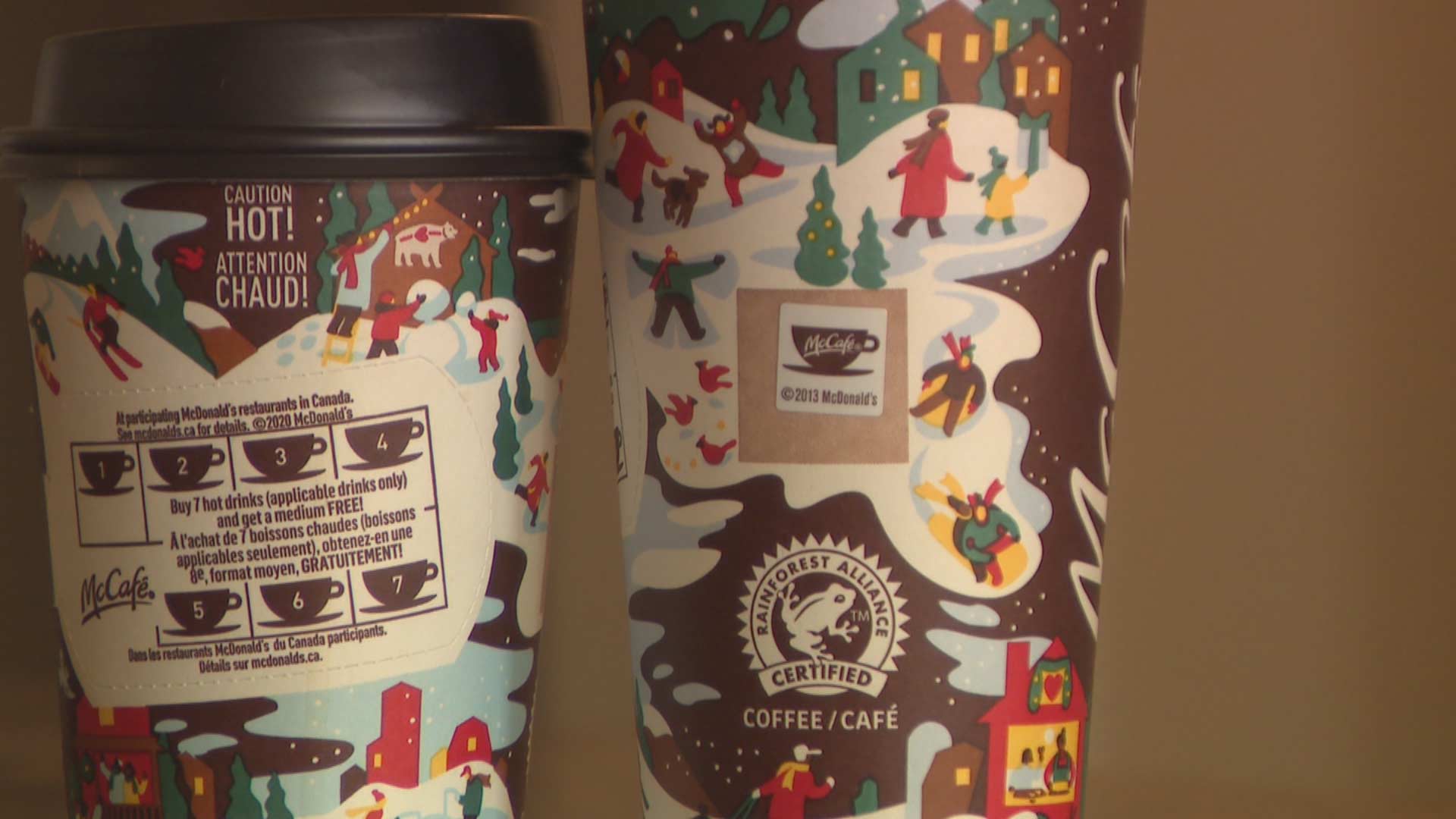If you pick up a coffee at McDonald’s, you may be treated to some indigenous art. Too often, in our disposable culture, we toss such things away without ever taking a moment to look at them. This time, I’d suggest you take a moment to actually look at it.
Phillip Cote (please click the link to see more of his art in Toronto, Ontario) is an indigenous artist from the Moose Deer Point First Nation who was hired by McCafe to act as a cultural advisor on a new project. The new festive coffee cups were to feature indigenous symbolism. The design could very easily have gone for more stereotypical imagery of inukshuks and an Inuit in a fur-trimmed coat. This art, however, recognized that indigenous people are modern people, living among us today, and not just a historical memory. Cote’s previous work has given us some really great murals in schools, and street art, throughout the city of Toronto. Now he had an opportunity to create a small piece of art for the masses: a humble coffee cup.
When he turned 18 in 1979, the artist was given a new name by elder Joe Couture in a naming ceremony: Noodjmowin, meaning ‘healer.’ Cote says Couture told him: “I saw you standing in front of crowds of people. You’re talking, you’re talking to all these people. And when you were talking, all this purple light was coming out of you. And it was coming from you on to all the people, you’re healing them with your words. And you were being healed too.” He was tasked with a special kind of healing: bridging the divide between Indigenous and non-indigenous people.
This cup is a step in that direction, introducing many Canadians to indigenous imagery and thinking. Perhaps while you are holding the cup, you could take few minutes to learn a little bit about the stories behind some of these iconic portrayals of Indigenous life.
A spirit bear is shown in white fur with a red heart. Don’t confuse it with a polar bear. A spirit bear is a black bear born with a pale coat, most often found on the coastal regions of British Columbia. The red heart is meant to inspire “heart thinking”, reminding us of the end of the prophecy of the seven fires: that one day, Indigenous and non-Indigenous hearts will be given a choice between two paths. If they choose the right path, the Seventh Fire will light the Eighth and final fire of brotherhood and sisterhood.
“Well, for me, the story of the eighth fire is the white bear coming down from the north,” said Cote. “It’s a time where our Indigenous people and knowledge would start to mingle with the western people and their knowledge, and open up this road of the future for Indigenous people. It’s where our voice will be heard just as clearly as the western voice. And this was going to be the beginning of the new people.”
Opening up that dialogue has been challenging in Canada. We mean well, but so many times as we start the discussion, when it gets a bit harder to work through the topics, we shy away from the discourse. Mirroring a similar challenge south of the border, these difficult conversations aren’t always comfortable. This cup focuses on simple, happy winter themes.
A medicine wheel is displayed prominently in white, yellow, red, and black. This is pan-indigenous symbol shared across many native cultures in Canada, represent the continuous circle of natural life and all things in it. The families on these cups are alive, vibrant, and modern. They are out with their children enjoying the winter weather. They are skiing, sledding, ice fishing, and making snow angels and snow people. They are playing hockey and music. Their clothes and homes hint at elements of traditional, as well as more modern styles. The people are surrounded by the the natural world, with trees, mountains, squirrels, a white deer, and the birds that stay with us the whole year long (chickadees, cardinals, and blue jays). The Northern Lights shine above the land.
I encourage you to click on some of the links in this blog to dig a little bit deeper while you are drinking that coffee from McDonald’s. The indigenous people of Canada are not historical memories. They live and work and play still on Turtle Island. Make some time to learn their stories this holiday season.
Please note that all quotes in this article were obtained by Jenny Lamothe, a reporter for Sudbury.com.

